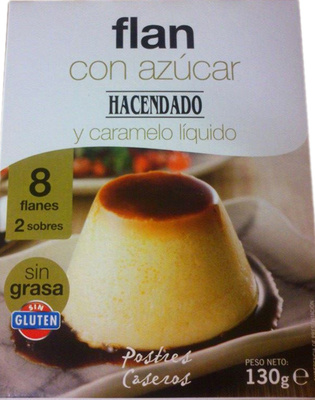Flan con azúcar y caramelo liquido - Hacendado - 130 g e flan + 60 g caramelo
This product page is not complete. You can help to complete it by editing it and adding more data from the photos we have, or by taking more photos using the app for Android or iPhone/iPad. Thank you!
×
Barra-kodea: 8480000320469 (EAN / EAN-13)
Izen arrunta: Preparado para hacer flan, con azúcar y con caramelo líquido
Kopurua: 130 g e flan + 60 g caramelo
Ontziratzea: en:container, es:Caja de cartón
Markak: Hacendado
Kategoriak: en:Desserts
Etiketak, ziurtagiriak, sariak: en:Low or no fat, en:No gluten, No fat
Dendak: Mercadona
Saltzen diren herrialdeak: Espainia
Matching with your preferences
Ingurumena
Ontziratzea
Transportation
Report a problem
Datuen iturria
Product added on by vegadona
Last edit of product page on by packbot.
Produktuaren orria -gatik editatua acuario, beniben, javichu, kiliweb, musarana, openfoodfacts-contributors, tacite-mass-editor, thaialagata, yuka.WDdna05xWTR1ZWRReC9ZeG9peU8ydmx6L3EzMUIyS0tMOWdESWc9PQ.









